Snakes have slithered their way into numerous myths and legends across cultures, often feared and revered in equal measure. While they play crucial roles in ecosystems, some snake species possess venom potent enough to inspire both curiosity and dread. Let’s explore some of the world’s most dangerous snakes and the fascinating, yet terrifying realities that surround them.
1. The Inland Taipan: Nature’s Venomous Marvel
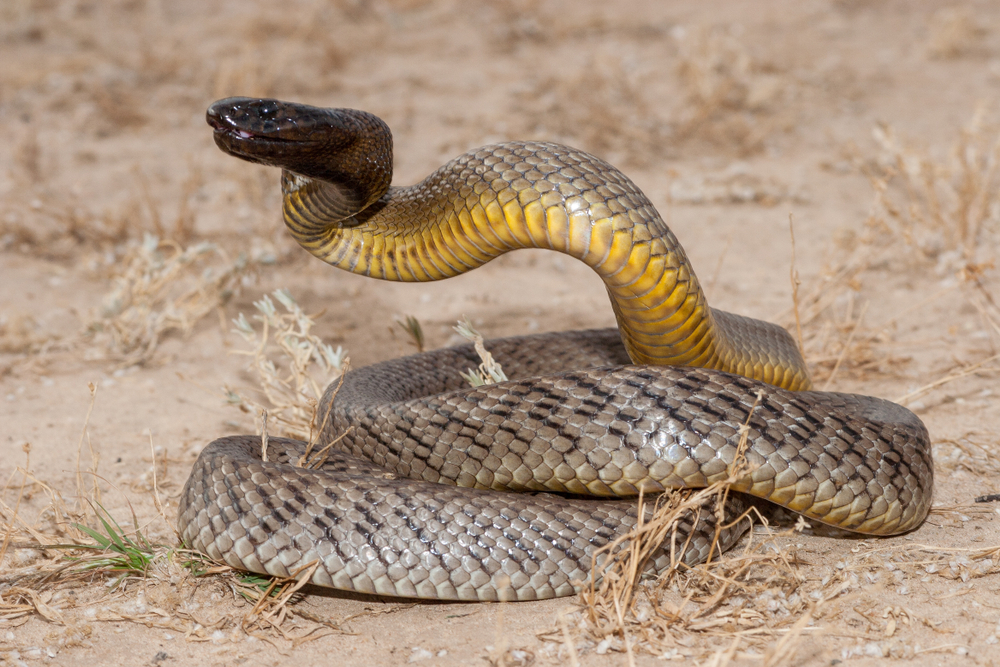
Often referred to as the “fierce snake,” the Inland Taipan holds the title for the most venomous snake on the planet. According to National Geographic, a single bite contains enough venom to kill at least 100 adult humans, or 250,000 mice! What makes this snake even more fascinating is its highly specific diet, primarily consisting of native rats. Despite its deadly venom, the Inland Taipan is incredibly shy and rarely comes into contact with humans. It resides in the remote and arid regions of central Australia, where it blends seamlessly into the desert landscape.
The Inland Taipan’s venom is a complex cocktail of neurotoxins, procoagulants, and myotoxins, making it particularly effective at immobilizing and digesting its prey. Fortunately, there have been no recorded fatalities due to its bite, thanks to its reclusive nature and the effectiveness of antivenom. Snake enthusiasts often marvel at the unique adaptations of this species, including its ability to adjust the potency of its venom depending on the threat level. In a world where the word “dangerous” often evokes fear, the Inland Taipan stands as a reminder of the beauty and complexity of nature’s creations.
2. The King Cobra: The World’s Longest Venomous Snake
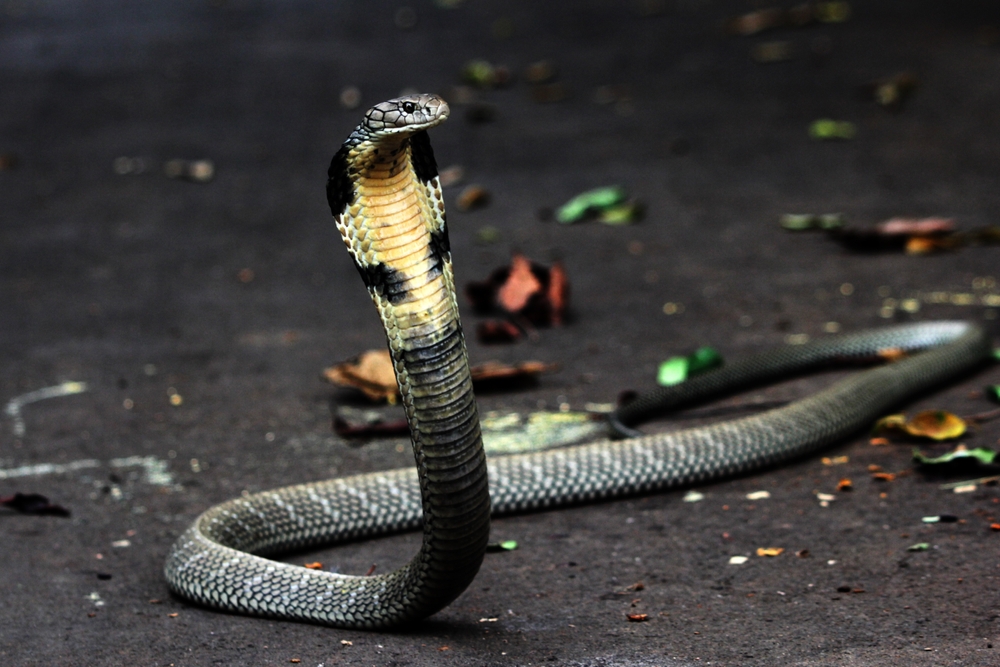
The King Cobra, renowned for its impressive size and striking hood, is the longest venomous snake in the world, reaching lengths of up to 18 feet. Native to forests from India through Southeast Asia, this majestic creature has a reputation for being both feared and revered in equal measure. One of the most fascinating aspects of the King Cobra is its intelligence; it is known for its sophisticated hunting techniques and territorial behavior. Unlike other snakes, the King Cobra can “stand up” and look a human in the eye, making it an awe-inspiring sight in the wild.
While its venomous bite can be fatal to humans, the King Cobra is more interested in avoiding conflict and will often warn intruders with a threatening display rather than resorting to a bite. This species feeds primarily on other snakes, including its own kind, which is a unique dietary preference among snakes. The King Cobra’s venom attacks the victim’s central nervous system, leading to paralysis and, if untreated, can cause death in a matter of hours. However, encounters with humans are rare, and fatalities even rarer, largely due to the snake’s elusive nature and effective antivenoms.
3. The Black Mamba: Speed and Venom Combined
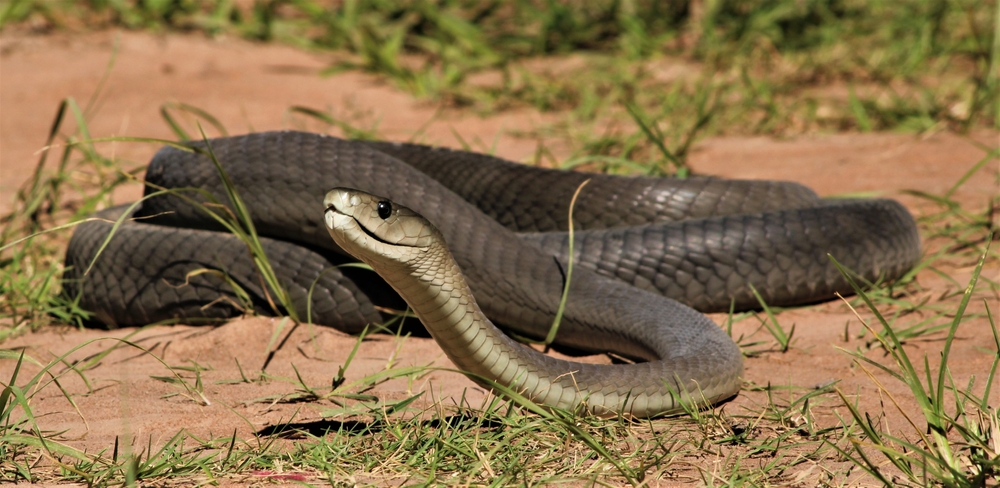
The Black Mamba is not only one of the deadliest snakes in the world but also one of the fastest, capable of reaching speeds of up to 12 mph. Found in the savannas and rocky areas of southern and eastern Africa, this snake has earned a fearsome reputation. The Black Mamba is named not for its outward appearance, which is typically an olive or greyish color, but for the inky blackness of the inside of its mouth, which it displays when threatened. According to Live Science, its venom is a potent mix of neurotoxins that can cause rapid fatality in humans if untreated.
Perhaps what is most terrifying about the Black Mamba is its combination of speed, agility, and aggressive nature when cornered. Unlike many snakes, the Black Mamba can strike up to 12 times in a single attack, injecting a lethal dose of venom with each strike. Its diet mainly consists of small mammals and birds, which it hunts with remarkable precision. Despite its fearsome reputation, the Black Mamba plays a vital role in controlling pest populations and maintaining the ecosystem balance in its native habitats.
4. The Fer-de-Lance: A Master of Camouflage
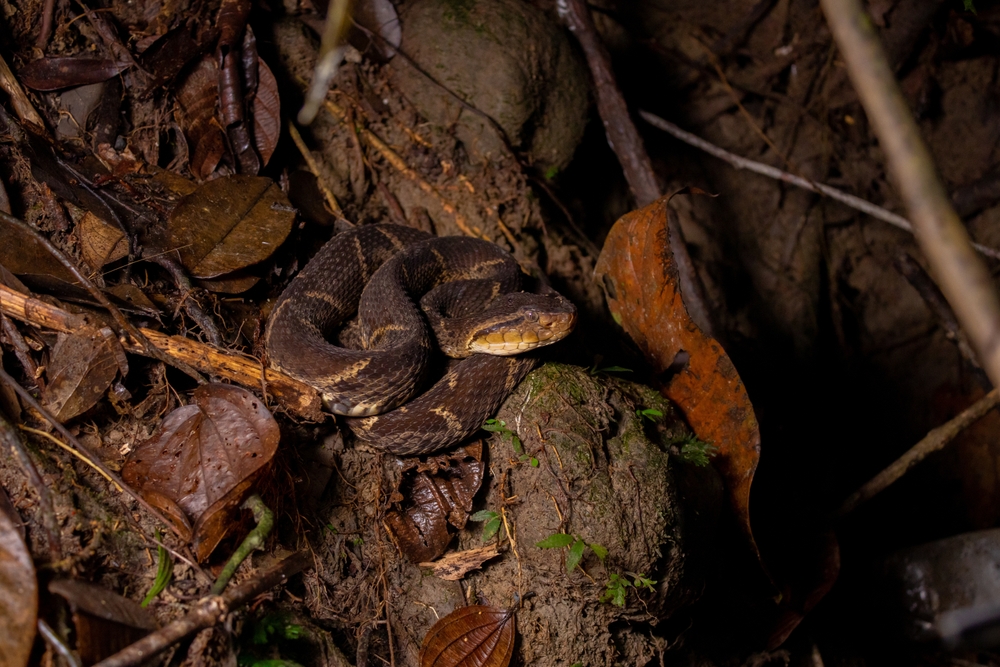
The Fer-de-Lance, also known as Bothrops asper, is a pit viper known for its exceptional camouflage abilities, which make it both fascinating and dangerous. Found in Central and South America, this snake can often be found near water sources, where its coloration blends perfectly with the forest floor. This natural camouflage makes it easy for the Fer-de-Lance to ambush its prey, which includes rodents, birds, and other small animals.
While its venom is highly toxic, the Fer-de-Lance is not naturally aggressive towards humans unless provoked, yet it accounts for a significant number of snakebites in its region due to its proximity to human settlements. A bite from this snake can lead to severe tissue damage and requires immediate medical attention. Conservationists note that the Fer-de-Lance plays a critical role in controlling the populations of its prey species, thereby maintaining ecological balance. Its presence underscores the delicate interplay between danger and necessity in natural ecosystems.
5. The Eastern Brown Snake: Speedy and Silent
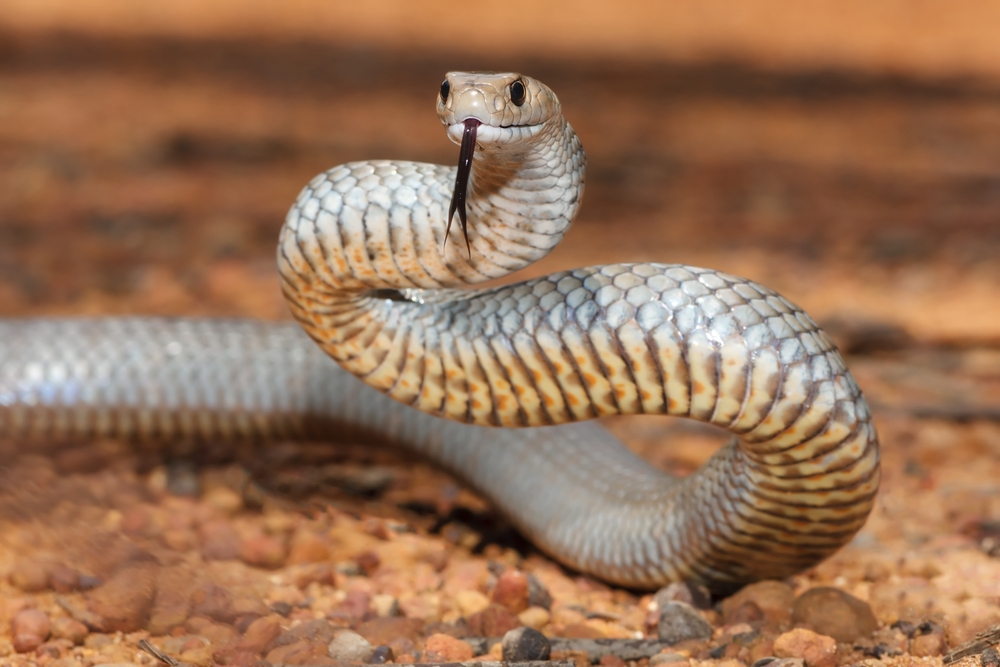
The Eastern Brown Snake is notorious for its speed and potent venom, making it one of Australia’s most dangerous snakes. It is responsible for the majority of snakebite fatalities in Australia, largely due to its proximity to populated areas. Found in a range of habitats, from arid deserts to lush forests, the Eastern Brown Snake is highly adaptable and efficient in its hunting methods. Despite its deadly reputation, it prefers to flee from humans, striking only if provoked or cornered.
Its venom contains strong neurotoxins and coagulants, capable of causing paralysis and cardiac arrest in severe cases. Fortunately, advancements in medical treatment and education have significantly reduced fatalities from Eastern Brown Snake bites. This snake’s sleek body and quick movements make it a master hunter, preying on small mammals, birds, and even other reptiles. While feared by many, the Eastern Brown Snake plays an essential role in its ecosystem, contributing to the control of pest populations.
6. The Russell’s Viper: A Rural Menace
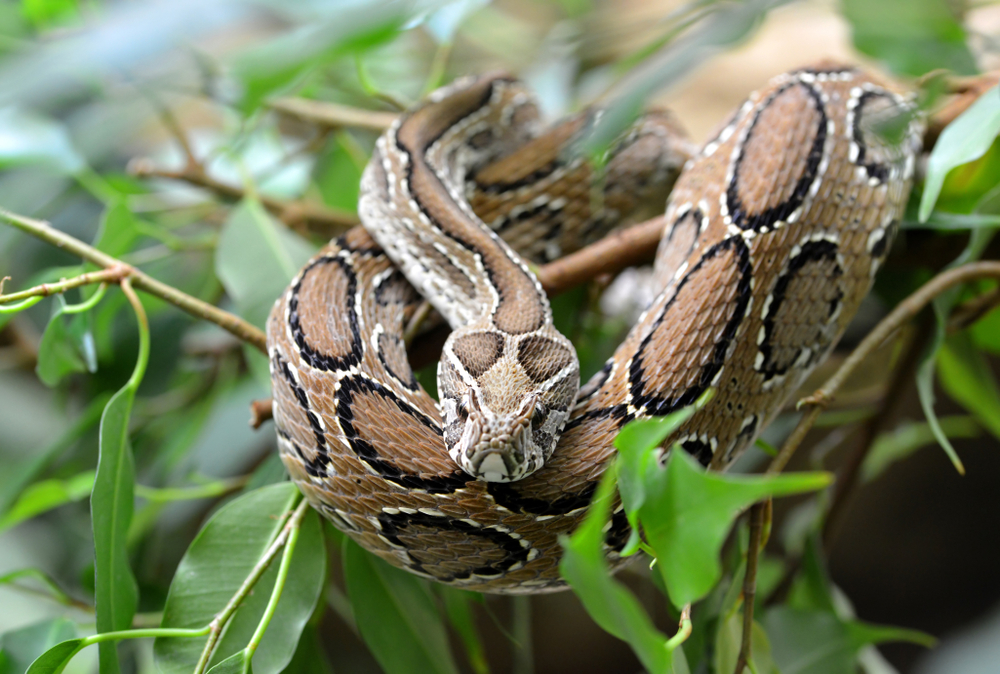 provided by Shutterstock
provided by Shutterstock
The Russell’s Viper is one of the deadliest snakes in Asia, accounting for thousands of snakebite incidents each year, especially in rural areas. This snake is known for its distinctive hissing sound and striking pattern of dark brown spots, which provide excellent camouflage in its natural habitat. It is most active during the night, stalking its prey, which includes rodents, lizards, and other small animals.
While its venom causes severe pain, swelling, and blood clotting disorders, it is the delay in receiving medical care in remote areas that often results in fatalities. To the local populations, the Russell’s Viper represents a significant health hazard, but it also serves as a warning of the interactions between humans and wildlife. Conservation efforts focus on educating communities about snakebite prevention and the importance of preserving natural habitats. Understanding this snake’s behavior and ecology is crucial for mitigating its impact on human populations.
7. The Gaboon Viper: Nature’s Venomous Work of Art
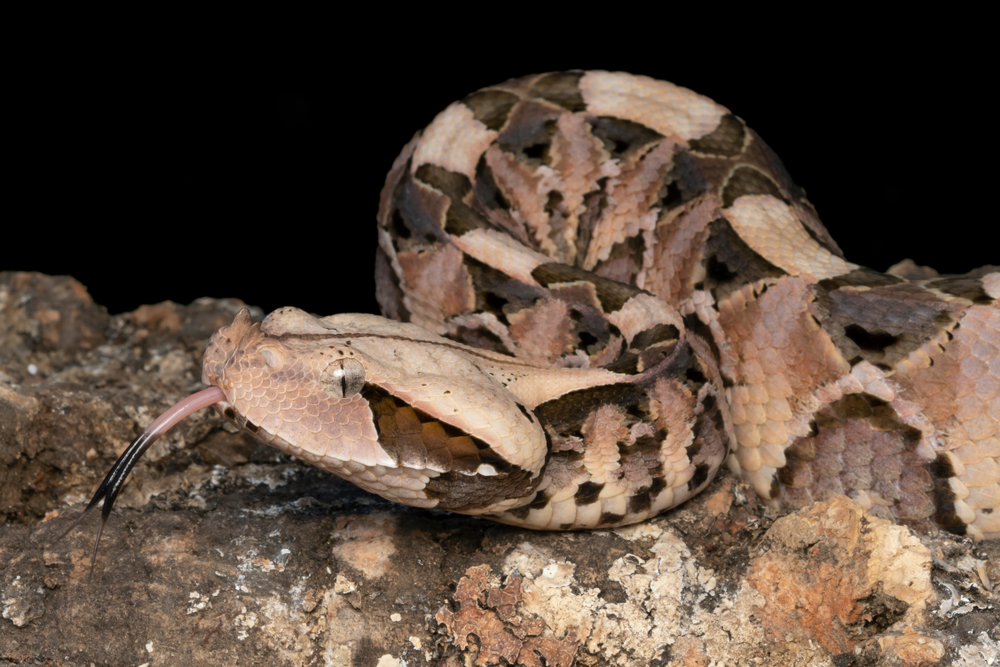
With its striking geometric patterns and massive size, the Gaboon Viper is both beautiful and deadly. Native to the rainforests and savannas of sub-Saharan Africa, it holds the record for having the longest fangs of any snake, measuring up to two inches. These fangs allow it to deliver a significant dose of potent venom, which can cause rapid tissue damage and bleeding.
Despite its fearsome capabilities, the Gaboon Viper is known for its docile nature and impressive camouflage, making it difficult to spot in the wild. This snake relies on ambush tactics to catch its prey, which includes small mammals, birds, and frogs. The Gaboon Viper’s unique adaptations underscore the diverse evolutionary paths snakes have taken to survive in various environments. For snake enthusiasts, encountering a Gaboon Viper is a rare and awe-inspiring experience, highlighting the intricate beauty of reptilian life.
8. The Saw-Scaled Viper: Small but Lethal
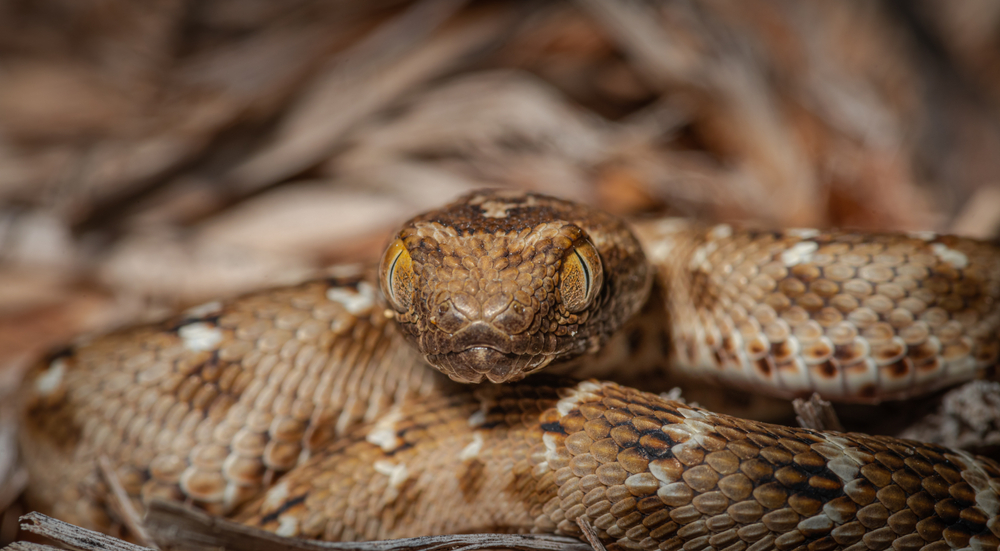
The Saw-Scaled Viper may be small, but it’s responsible for more human fatalities than almost any other snake in its range, which spans parts of Africa, the Middle East, and South Asia. This snake’s name comes from the characteristic rasping sound it makes by rubbing its scales together when threatened. Its venom is hemotoxic, meaning it destroys red blood cells and disrupts blood clotting, causing extensive internal bleeding.
Despite its lethal reputation, the Saw-Scaled Viper’s bite is often a defensive reaction to accidental encounters with humans. In its native habitat, it plays an essential role in controlling the populations of its prey, which include rodents and insects. The high incidence of bites is often attributed to its proximity to human settlements and its nocturnal habits. Efforts to mitigate the impact of this snake on human populations include education, improved access to medical care, and habitat conservation.
9. The Boomslang: Deadly Beauty with a Lethal Bite
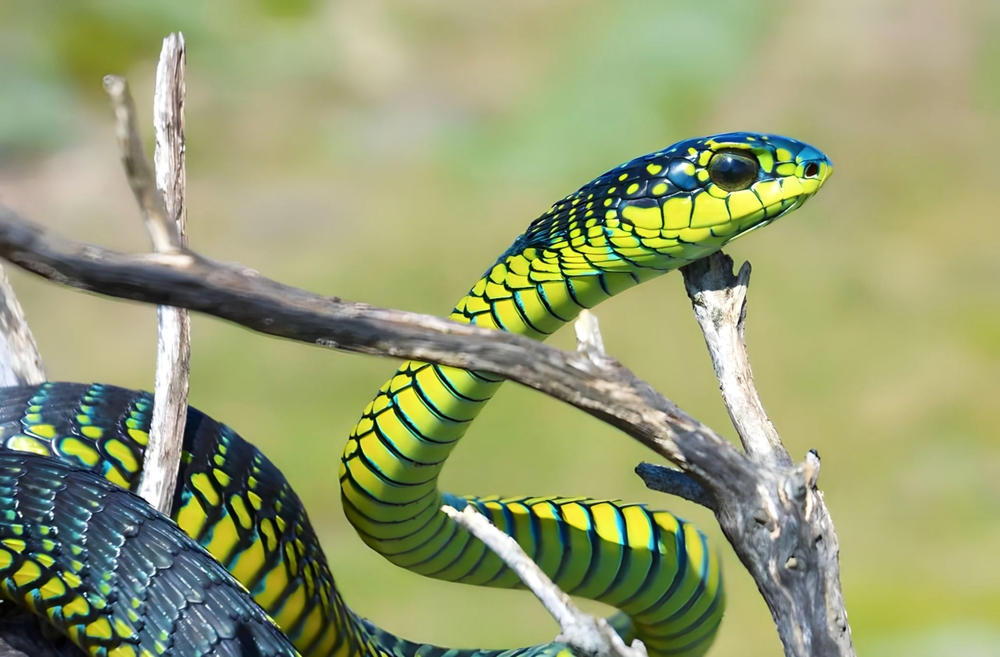
The Boomslang is a tree-dwelling snake native to sub-Saharan Africa, known for its stunning green coloration and potent venom. What sets the Boomslang apart is its rear-fanged bite, which can cause fatal hemorrhaging if untreated. Unlike other venomous snakes that are aggressive when threatened, the Boomslang is shy and prefers to avoid human contact.
Its diet consists primarily of birds, chameleons, and small mammals, which it captures using its excellent camouflage and stealth. Despite its impressive capabilities, the Boomslang is rarely encountered by humans, thanks to its arboreal lifestyle. While incidents of Boomslang bites are rare, they serve as a reminder of the diverse and often hidden dangers lurking in nature’s corners. For those lucky enough to see a Boomslang in its natural habitat, it represents both the beauty and potential peril of the wild.
10. The Belcher’s Sea Snake: The Ocean’s Venomous Inhabitant
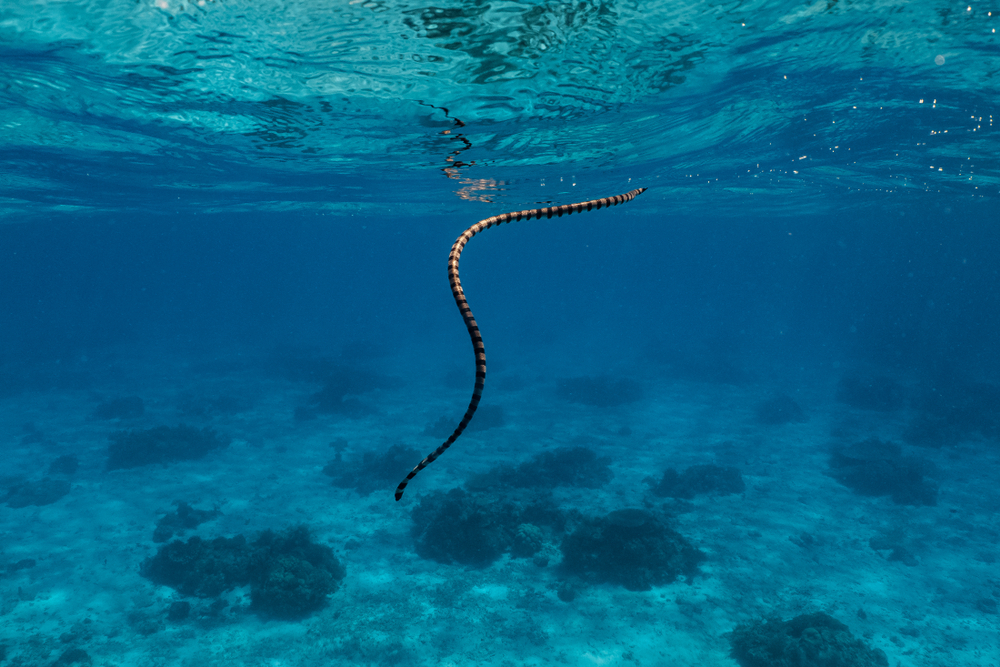
The Belcher’s Sea Snake is considered one of the most venomous sea snakes, though it is rarely encountered by humans due to its offshore habitat. Found in the warm waters off Southeast Asia and Northern Australia, this snake is adapted to a life at sea, with a streamlined body and paddle-like tail. Its venom is highly potent, but the snake is generally docile and bites are incredibly rare.
Marine scientists are fascinated by the Belcher’s Sea Snake’s adaptations, which include the ability to extract oxygen from the water and reduce their metabolic rate to conserve energy. This snake feeds primarily on fish and eels, using its venom to immobilize prey. The Belcher’s Sea Snake is an example of the diverse array of life that thrives in ocean ecosystems, playing a crucial role in maintaining the balance of marine food webs. Its venom, though deadly, is a reminder of the ocean’s untamed and mysterious nature.
11. The Tiger Snake: An Adaptive Survivor
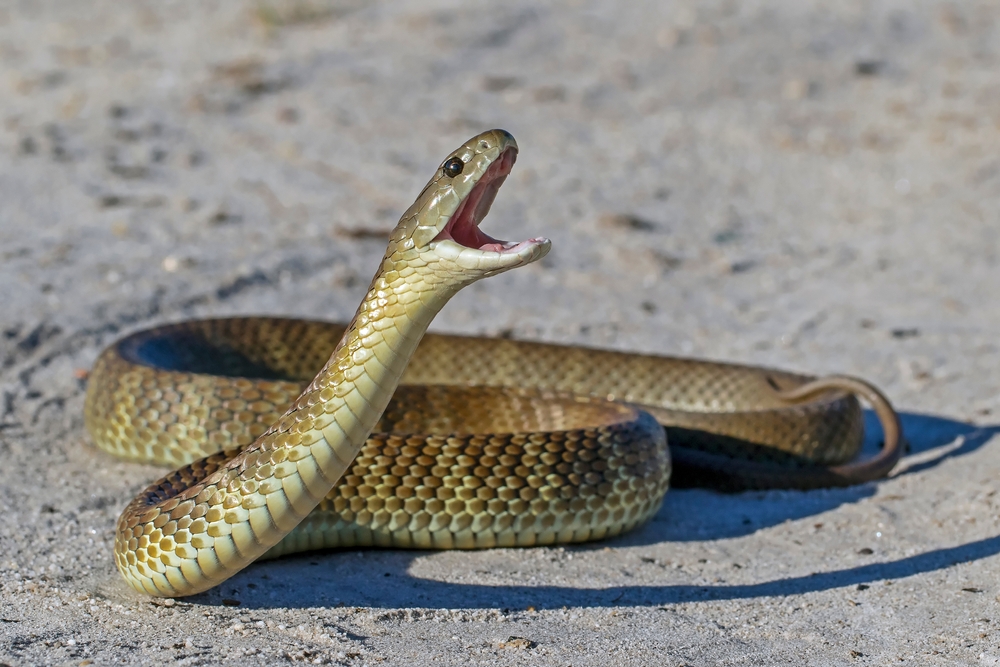
The Tiger Snake is a venomous snake found in southern regions of Australia, known for its striking banded appearance that resembles a tiger’s stripes. This species is highly adaptable, inhabiting a variety of environments from coastal wetlands to dense forests. The Tiger Snake’s venom contains powerful neurotoxins, coagulants, and myotoxins, making it a formidable predator in its ecosystem.
Despite its potentially deadly bite, the Tiger Snake is more interested in avoiding conflict and will only attack when threatened or cornered. Locals are often cautious but respectful of this snake, recognizing its important role in controlling rodent populations. Conserving the Tiger Snake’s habitat is crucial, as it is threatened by habitat loss and human encroachment. Efforts to educate the public about this snake’s ecological benefits have helped improve its reputation among those who share its habitat.
12. The Philippine Cobra: The Spitting Viper
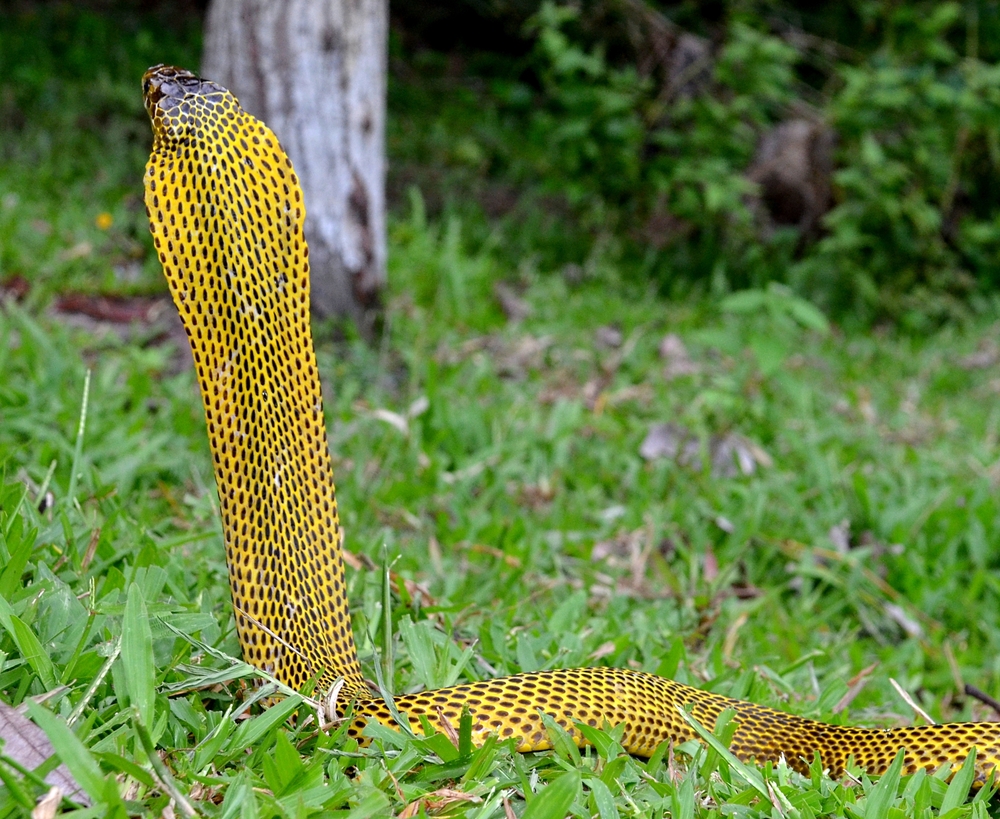
The Philippine Cobra is a highly venomous spitting cobra native to the islands of the Philippines, known for its ability to project venom with remarkable accuracy. This snake’s neurotoxic venom can cause respiratory failure in humans if not treated promptly. What makes the Philippine Cobra particularly dangerous is its tendency to spit venom in defense, aiming for the eyes to deter predators.
Despite its defensive capabilities, the Philippine Cobra is a shy snake that prefers to avoid human encounters whenever possible. It primarily feeds on small mammals, birds, and frogs, contributing to the control of pest populations. Conservationists emphasize the need to preserve the Philippine Cobra’s natural habitat to ensure its survival, as it faces threats from habitat destruction and the illegal wildlife trade. Understanding and respecting this snake’s behavior and habitat are key to reducing human-snake conflicts in its native region.
13. The Coral Snake: A Colorful Warning
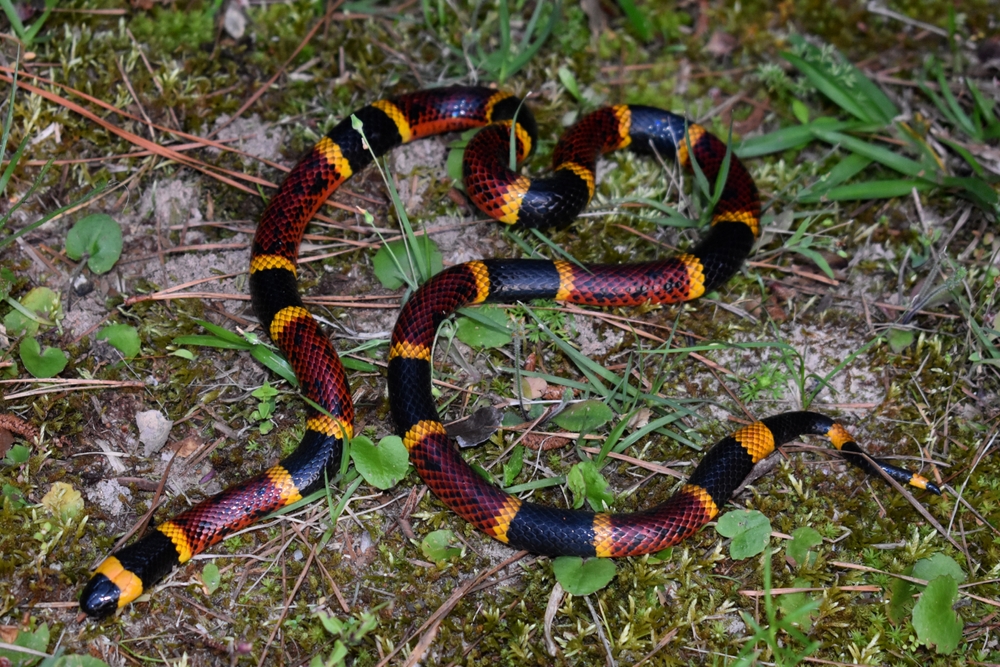
Coral snakes are a group of highly venomous snakes found in the Americas, easily recognized by their bright bands of red, yellow, and black. Their striking coloration serves as a warning to potential predators of their potent venom, which contains neurotoxins that can lead to paralysis and respiratory failure. Despite their lethal venom, coral snakes are reclusive and rarely bite unless provoked.
These snakes are often confused with non-venomous species such as the milk snake, leading to the popular rhyme, “Red on yellow, kill a fellow; red on black, friend of Jack,” as a mnemonic to differentiate them. Coral snakes play a vital role in their ecosystems by controlling the populations of their prey, which includes small reptiles and amphibians. Interactions with humans are infrequent, and advancements in antivenom have significantly decreased fatalities. As with many venomous snakes, understanding and respecting their role in nature is essential for coexistence.
